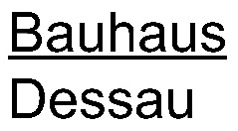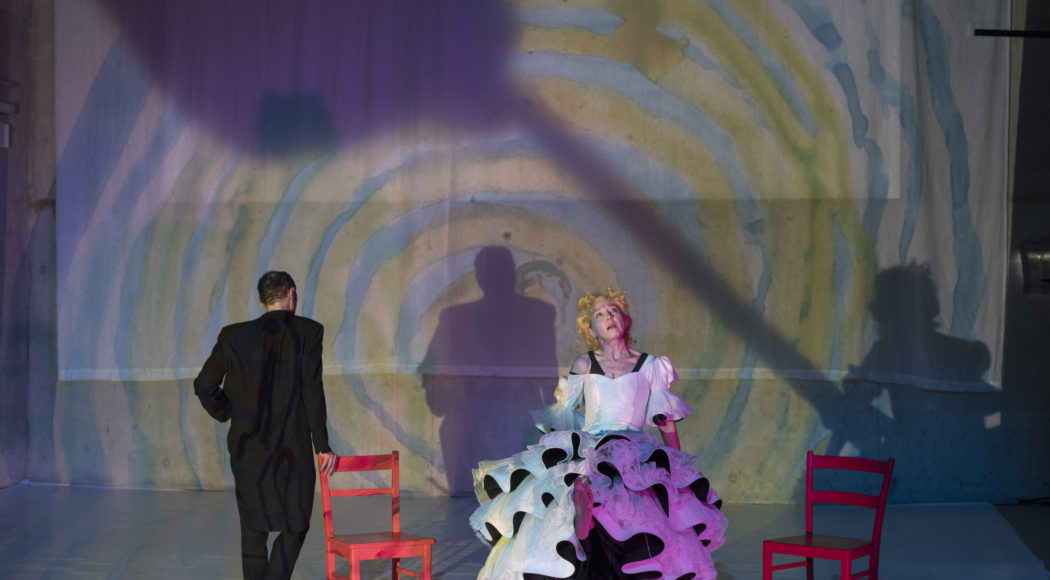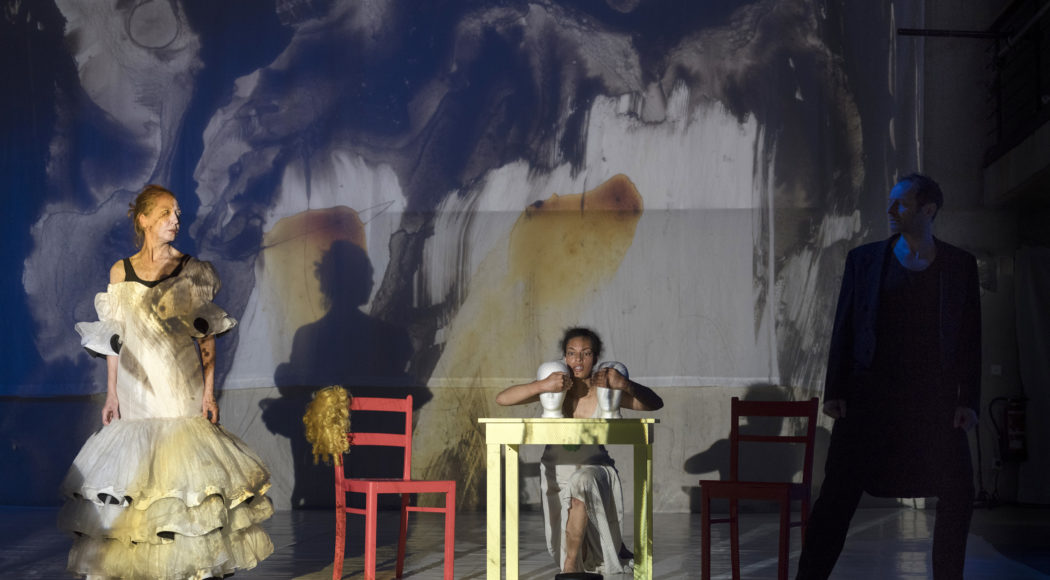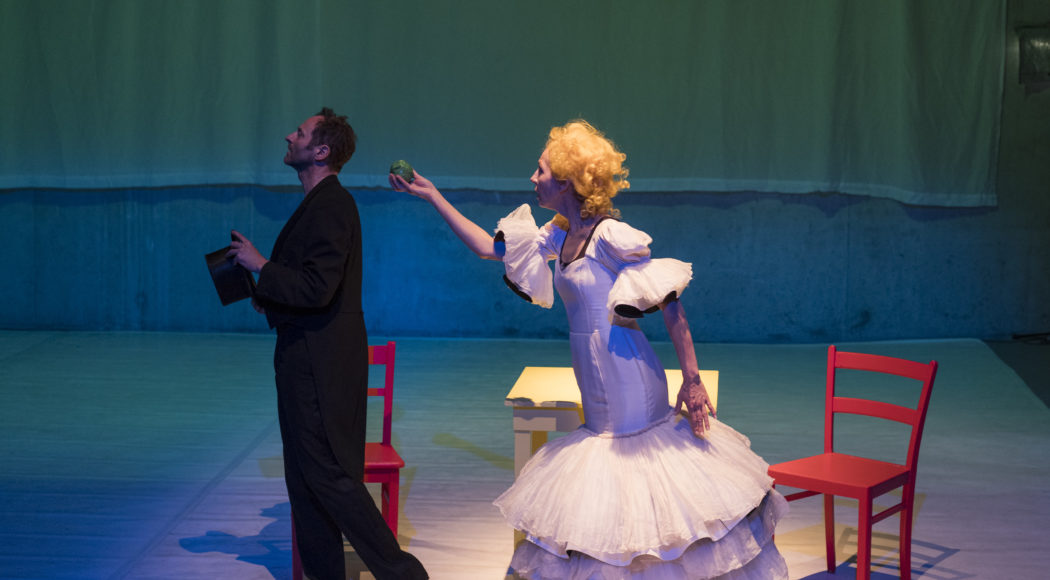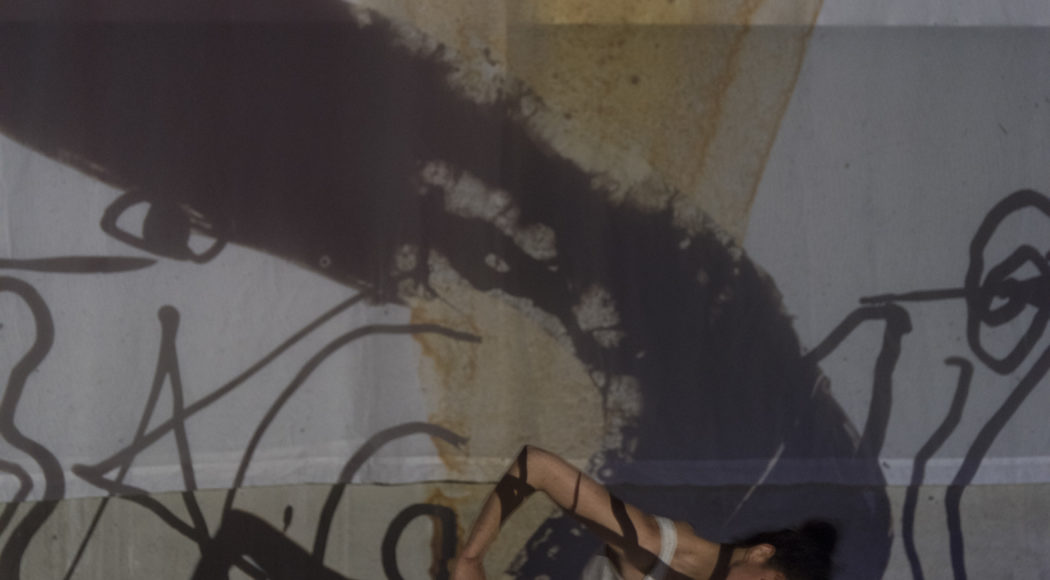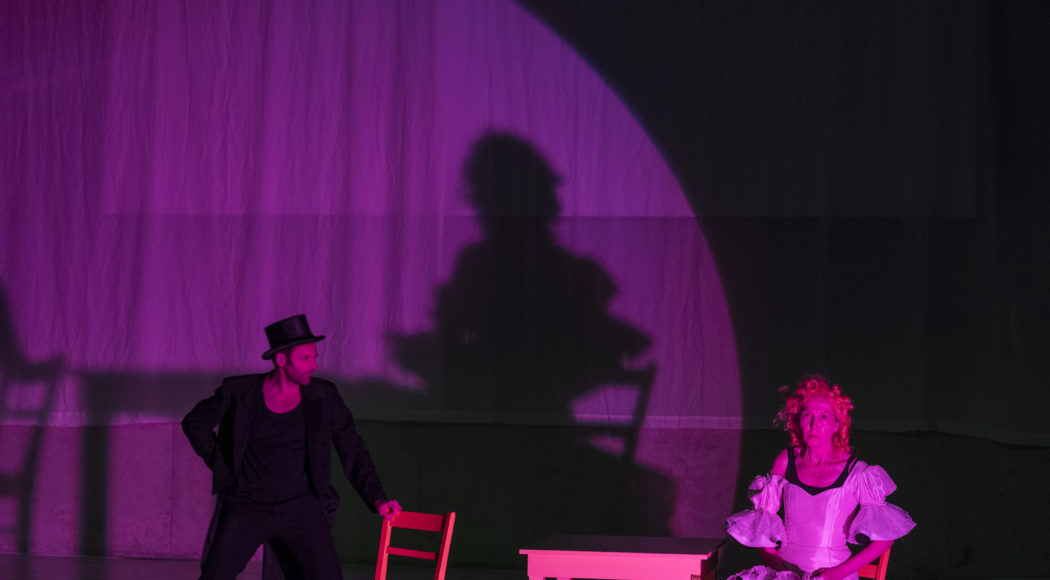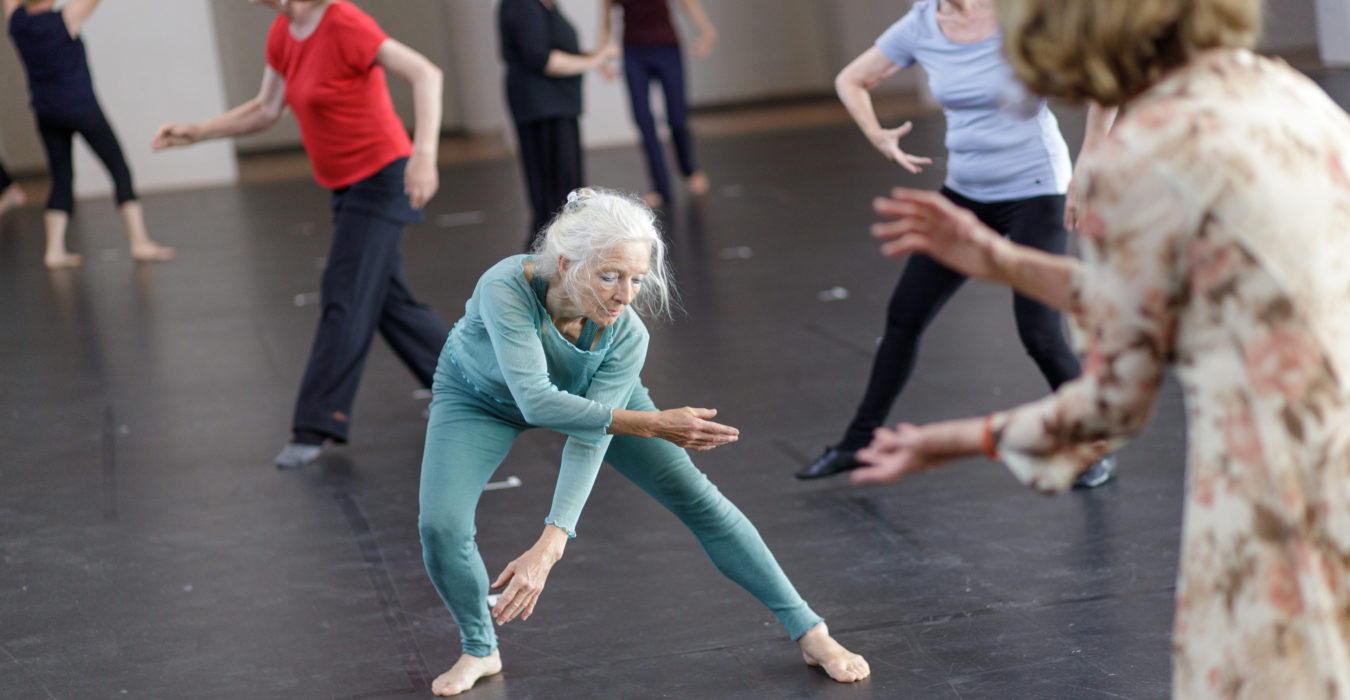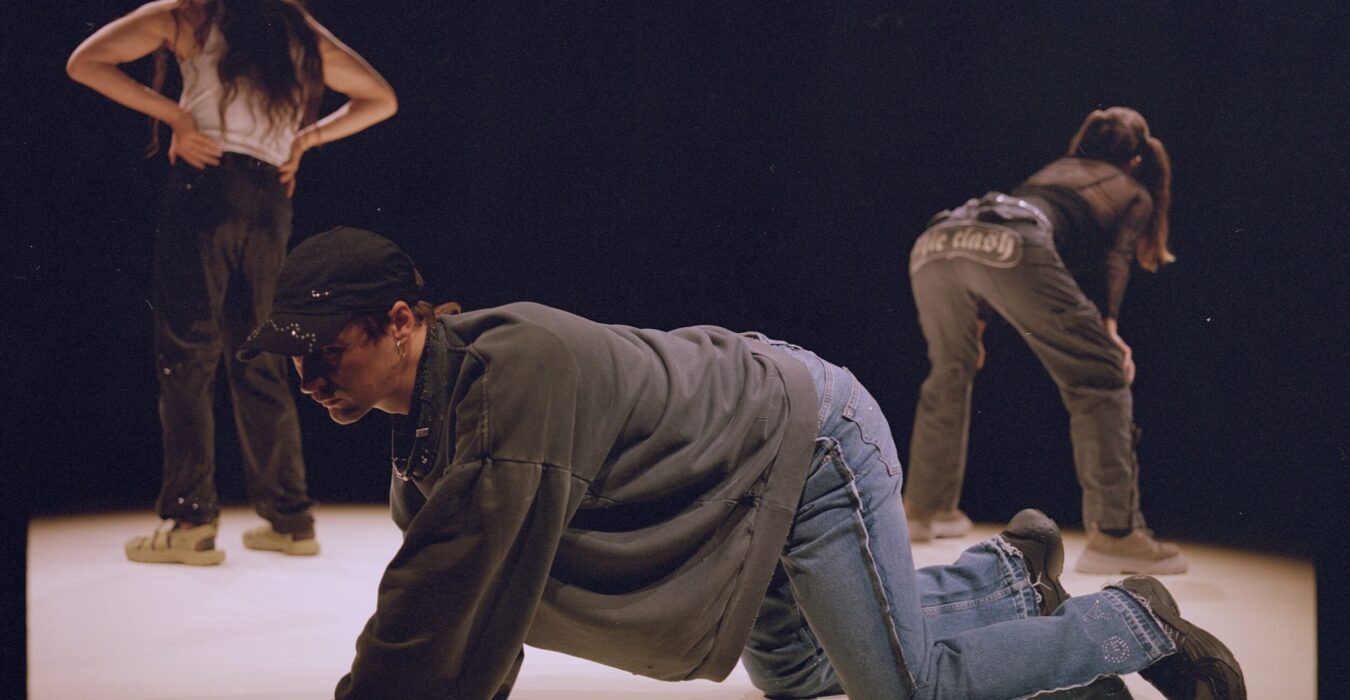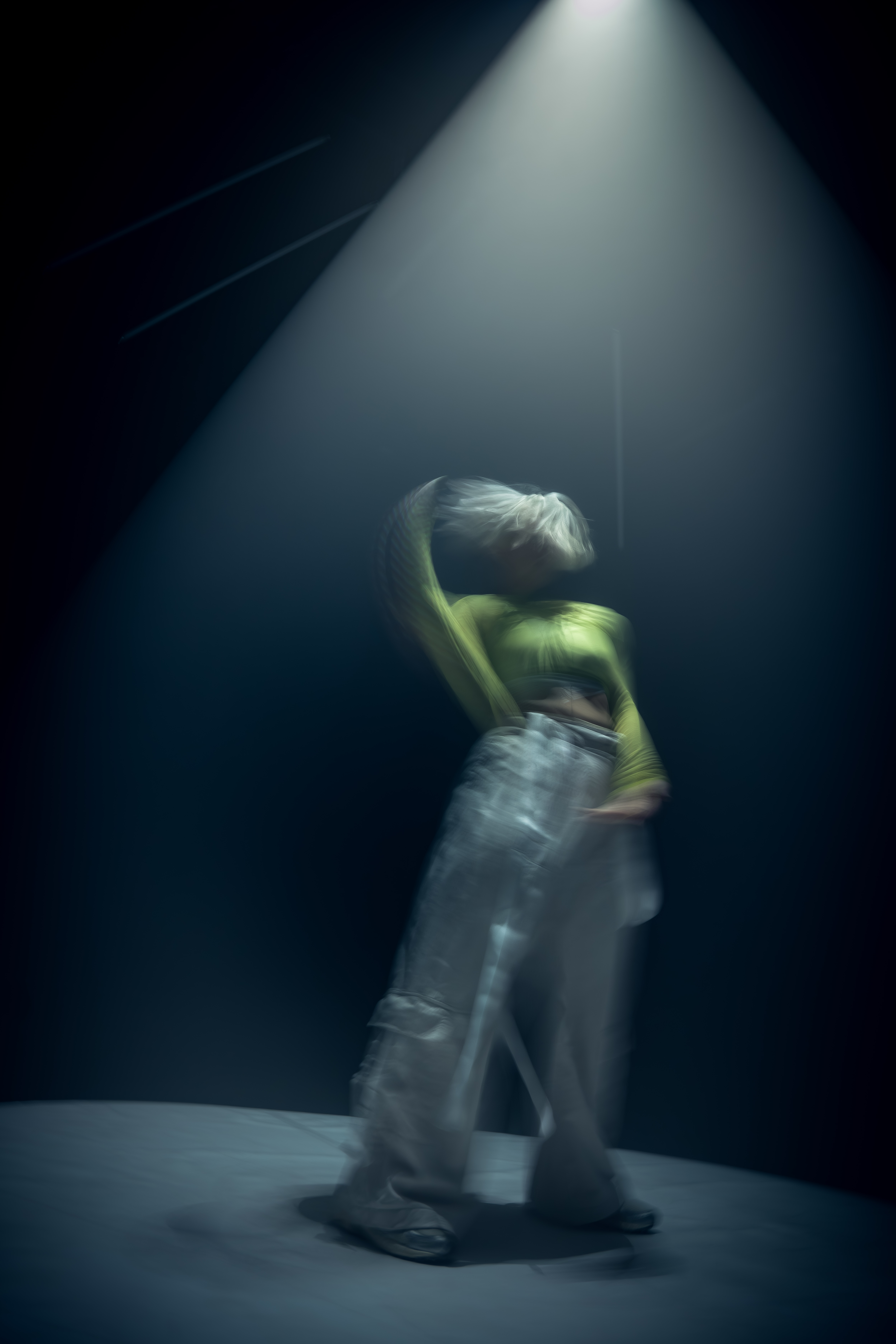Über die Mauer
Arila Siegert nach Wassily Kandinsky
The title says it all: With “Over the Wall”, Kandinsky, known to most only as a painter, surprises us with a play for the stage that tells of the creative process of a work. In a fictional dialogue between artist and audience that is as serious as it is amusing, he provides insights into the painter’s point of view, breaking out of the two-dimensionality of the painting and expanding it into the three-dimensional spatiality of the theatre.
The director and choreographer Arila Siegert, together with the artist group Violett, undertakes the scenic realisation of Wassily Kandinsky’s stage composition “Over the Wall” from 1913/14 and the playful examination of his theory of the Gesamtkunstwerk.
Duration: approx. 1 hr.
+ 15.01. 13:00 Workshop Kandinsky – The Language of the Arts with Arila Siegert (Booked out)
+ 15.01. 17:00 Uhr Vor dem Vergessen bewahren – Tanz in der DDR, panel discussion of the Saxon Academy of Arts in cooperation with the Tanzarchiv Leipzig e.V.
Note: The Pasta Factory is no longer in HELLERAU. The kitchen is currently being rebuilt and the Lago Bar will be offering drinks in the Dalcroze Hall until the event of “Über die Mauer” begins at 8 pm.
Book now!
From now on, you can send registrations for the free panel discussion and ticket reservations for the play “Over the Wall” by email to ticket@hellerau.org.
For telephone enquiries, please contact the Visitor Centre from 10.01. on Tel. 264 62 46, Mon – Sat 11 am – 6 pm.
Ticket sales for “Over the Wall” are expected to start on 12.01. You will find the current Corona rules (probably 2G+) in our overview of Corona measures after the new Corona regulations have been announced.
As soon as the audience is admitted, they are whisked away into the stage world of the synaesthete Wassily Kandinsky with scene instructions from his stage composition Violet.
The texts in the prelude are taken from Kandinsky’s writing On the Spiritual in Art. They allow us to immerse ourselves in Kandinsky’s perception of colours, especially which properties and sounds he assigned to them.
Kandinsky as a playwright
Some people may have been surprised to learn that the painter Kandinsky also wrote works for the stage. How did this come about?
Perhaps one trigger was that he saw a performance of Richard Wagner’s Lohengrin at the Moscow Court Theatre in 1895 and was deeply impressed by how the various arts, music, language and dance were composed together in this opera. “The violins, the deep bass notes, and especially the wind instruments embodied for me at that time all the power of the eve. I saw all my colours in my mind. They stood before my eyes. Wild, almost fantastic lines were drawn before me. I didn’t dare use the expression that Wagner had musically painted ‘my’ hour. But it became quite clear to me that art in general is much more powerful than it seemed to me, that painting, on the other hand, could develop just as much power as music possesses. And the impossibility of discovering these powers myself, or at least of seeking them, embittered my renunciation even more.”
Two things become clear from this description: on the one hand, how much the synaesthete Kandinsky thought in colours, how he heard colours and saw sounds, in what way colours and sounds corresponded with each other for him and what significance this interplay had for him.
He defined this succinctly and beautifully in his major theoretical work On the Spiritual in Art, published in 1911. “In general, colour is a means of exerting a direct influence on the soul. The colour is the key. The eye is the hammer. The soul is the piano with many strings.”
On the other hand, the description foreshadows that the painter Kandinsky would one day deal intensively with the possibilities of theatre. He did this in parallel with his preoccupation with painting in the so-called Murnau years between 1909 and 1914. In the theatre, it was clear to him, he had the opportunity to break through the two-dimensionality of the picture and artistically penetrate the three-dimensionality of the stage.
In painting as in theatre, the starting point for the creation of a composition was the inner image, which becomes a process in space. Or as the dancer Gret Palucca put it: “In the beginning there is instinct and in the end art. Only the ‘inner necessity’, Kandinsky repeatedly emphasised in his theoretical writings, moves the artist to create a work, it alone is the answer to the meaning of a work and in it, according to Hugo Ball, Dada co-founder and proven connoisseur of Kandinsky, three elements document themselves of which the work of art consists: time, personality and the artistic principle. Or, as Kandinsky defined his theory of creative activity: the shaping of the eternal-objective, the essence of art, the spiritual, through the temporal-subjective, that is, the artist who, as a human being, belongs to a nation and an epoch.
Über die Mauer (On the Wall), written in 1913 and completed in Munich in January 1914, is not, as it stands, a stage play in the conventional sense. It seems like a collection of thoughts on how a work of art comes into being, what place art has in society. – Quite incidentally, Kandinsky has succeeded in writing a small hymn to abstract painting in this piece. – Moreover, Über die Mauer can be understood as a plea to the spectator to free himself from rigid forms and ideas, to be open, to look beyond the wall. For only in this way will he or she be enabled to experience analogous, if not identical, sensations when viewing a work of art, as the artist himself or herself experienced when creating the work of art. “The process of creation and the process of reception are identical and require no intellectual mediation, since art and understanding are even mutually exclusive,” wrote Kandinsky in On the Spiritual in Art, and so it is not surprising that he prefaced the piece On the Wall with the following quotation from Honoré de Balzac: “Reason is always poor in comparison with feeling. The first is always and naturally limited and the second is limitless. To apply reason where one must feel is the property of a soul incapable of momentum.”
Kandinsky wanted an approach to the work that was unprejudiced by conventional viewing and listening habits, a recipient who did not immediately pigeonhole a work, one who entered into dialogue with what was seen and thus became part of what was happening and part of the total work of art.
The means by which this oscillation in unison should be created, the elements from which a stage composition should be composed, were laid down by Kandinsky in 1911 in the essay On Stage Composition:
- musical sound and its movement,
- physical-emotional sound and its movement, expressed through people and objects. Kandinsky was immensely interested in dance. For him, “in simple movement, which is not externally motivated, lay an immeasurable treasure full of possibilities.” He was friends with the aforementioned Gret Palucca. Her expressive dance impressed him and he even dedicated a chapter to her in On the Spiritual in Art. – By the way, we have come full circle: Arila Siegert, originally a dancer and choreographer, director of Über die Mauer, trained with the very same Gret Palucca in Dresden. –
- coloured sound and its movement (a special stage possibility) – meaning above all effects of light.
Language takes on a life of its own, it is no longer an expression of the individual waiting for an answer, but reflects the mood that prevails in souls.
In his stage compositions, all genres were to work together on an equal footing to form a multi-layered, theatrical event, actors, dancers, singers were to work together with their art on an equal footing, detaching themselves, standing side by side, like colour/sound/movement.
Around the same time as the creation of Über die Mauer, Kandinsky described in his text Chronik the ‘unrestricted freedom’ of the artist in the world comparable to a stage:
“A stage to which no limit is conceivable.
On this stage an action, today called tragedy:
Movement. Sounds. Collision. Bang. Explosion. Disappearance. Appearance. No beginning. No end. …”
At a time when many people make themselves experts on any subject, when quick judgements without deeper knowledge are becoming more and more the rule, it seems beneficial to give space to Kandinsky’s demand not only to listen and look closely, but to listen and look with empathy, and to follow the advice he gave to people who were looking in vain for ‘standards of value’: “Keep your ear open to music, open your eye to painting. And do not think! Examine, if you will, by hearing after you have seen. Ask yourself, if you will, whether this work has ‘carried you away’ into a world hitherto unknown to you. If so, what more do you want?”
With Über die Mauer, Arila Siegert continues her exploration of Kandinsky’s world of colour, sound and thought with the artist group Violett, with whom she staged the world premiere of the stage composition Violett at the Anhaltisches Theater Dessau in 2019, to mark the 100th anniversary of the Bauhaus, of which Kandinsky was a member from 1922 until its closure in 1933.
Carola Cohen-Friedlaender, Berlin 2021
Arila Siegert has a close connection to Bauhaus ideas through her work as a ‘Called Expert’ for the stage at the Bauhaus (1996-98) and through her training with Gret Palucca in Dresden. Palucca was a close friend of Paul Klee and Wassily Kandinsky. Her teaching was significantly inspired by them. Arila Siegert received her first engagement as a dancer in 1971 in Berlin with Tom Schilling at the dance theatre of Walter Felsenstein’s Komische Oper. In 1979 she went to the Semper Opera in Dresden as a solo dancer. In 1987 she founded her first own dance theatre at the Staatsschauspiel there. She continued the Dresden tradition of expressive dance by working on reconstructions of the pieces of Dore Hoyer, Mary Wigman and Marianne Vogelsang and developing her own solo programmes that took her all over the world. She also created numerous full-length ballets. In 1987 Arila Siegert founded a modern dance theatre at the Staatsschauspiel Dresden under the directorship of Gerhard Wolfram. She worked with Ruth Berghaus on Hans Werner Henze’s Orpheus Ballet in Vienna and with Peter Konwitschny on Kurt Weill’s Seven Deadly Sins in Dresden. From 1992 Arila Siegert directed the dance theatre at the Anhaltisches Theater Dessau and was appointed as an expert for the stage at the Bauhaus. With her production of Macbeth in 1998 in Ulm, she launched her career as an opera director. Since then she has created over fifty productions, including scenic premieres such as Sergei Slonimski’s Master and Margarita and Vinko Globokar’s L’armonia drammatica, both with Marie-Luise Strandt as set designer and Helge Leiberg for live painting. In 2014 she made her US directorial debut with The Magic Flute in Florida. Arila Siegert received the Critics Award for Dance in 1989 and the Federal Cross of Merit in 1993. She is a member of the Akademie der Künste, Berlin and the Sächsische Akademie der Künste in Dresden and belongs to the members’ assembly of the Goethe-Institut. The archive of the Berlin Academy of Arts holds her materials. A book about her work was published in 2014.
Kerstin Schweers was born in Dorsten, a medium-sized small town on the edge of the ‘Ruhrpotts’. She gained her first stage experience on the school theatre stage. After graduating from high school, she went to study acting at the Saarland University of Music and Theatre in Saarbrücken. Her first engagements at municipal and state theatres took her to Wilhelmshaven, Dortmund, Zurich and Darmstadt between 1989 and 1996. She was then a permanent ensemble member at the Nuremberg State Theatre until 2005. Since 2006 she has been living in Berlin and working as a freelance actress. She has performed as a guest at the Anhaltisches Theater Dessau, the Staatstheater Braunschweig, the Staatsoper Berlin and the Renaissance Theater Berlin, and has appeared in independent productions at Radialsystem V and the Theaterdiscounter Berlin, among others.
Jörg Thieme was born in Eisenhüttenstadt and grew up in Grünheide/Mark. From the age of six he sang in the Berlin boys’ choir ‘Omnibus’, received individual vocal training from teachers at the ‘Hanns Eisler’ Academy of Music in Berlin and gained experience during eight years of membership in countless stage performances, radio, record and television recordings. During his acting studies at the Leipzig Academy of Music and Theatre ‘Felix Mendelssohn Bartholdy’, he was accepted into the ensemble of the Staatschauspiel Dresden. From 1996 to 2007 he worked as a freelance actor at many theatres in Germany, taking on roles at Schauspiel Bonn, Kampnagel Hamburg, Staatstheater Wiesbaden and Schaubühne am Lehniner Platz Berlin, among others. From March 2007 to 2017 he was a permanent member of the Berliner Ensemble am Schiffbauerdamm. He has been freelancing again since 2017. Jörg Thieme has worked(ed) with Markus Bothe, Nicolas Charaux, András Dömötör, Achim Freyer, András Fricsay, Manfred Karge, Burkhard C. Kosminski, Thomas Langhoff, Jens Mehrle, Claus Peymann, Arila Siegert, Sebastian Sommer, Peter Stein, Philip Tiedemann, Hasko Weber, Robert Wilson, among others.
Isabel Wamig has been dancing and making music since childhood. She received her training in classical singing, jazz singing, violin, stage dance and music education at the Musik- und Tanz-Gymnasium Essen-Werden, at the ArtEZ University of the Arts in Arnhem and at the Folkwang University of the Arts in Essen. As a singer and dancer, Isabel Wamig has performed in the Extra Opera Choir of the Aalto Theatre in Essen, in the musical productions of the Musiktheater im Revier in Gelsenkirchen and most recently in the interdisciplinary production Rolling by Remote Control Productions in Berlin and at the ImPulsTanz Festival in Vienna. As a violinist, she has played in the Junge Streichorchester Bern, for example. In addition to her participation in mostly interdisciplinary free theatre productions, Isabel Wamig also develops her own concerts and performances. For example, she writes her own music for her duo with the guitarist Micha Lorenz or choreographs with the dancer Yen Lee. In the production smile with the inclusive dance company SZENE 2WEI, she took over the musical direction at the Theaterhaus Stuttgart in 2019. As a teacher for singing, violin and dance, Isabel Wamig has designed various music and dance projects, such as for PACT Zollverein in Essen, the Music and Dance High School Essen-Werden or the German JuniorAcademy for the Promotion of the Gifted in Hamburg. Currently, Isabel Wamig’s collaboration with the directors Anna Peschke and Arila Siegert is taking her back to Berlin.
Ali N. Askin was born in Munich in 1962 and studied at the Musikhochschule there from 1982-1986. In 1987 he was a guest student at the Academy for Film and Television. He earned his money as a radio presenter, copyist, music teacher and night porter. On the side, he was a keyboardist, pianist and composer for various bands. This was followed by engagements as a composer, musician and musical director at the Kammerspiele and the Residenztheater in Munich, the Düsseldorf Schauspielhaus and the Zurich Theatre. In 1991, he became Frank Zappa’s assistant for the project The Yellow Shark with the Ensemble Modern. After his death, he continued to work for the Zappa Family Trust. Since the mid-1990s, Ali N. Askin has worked increasingly for radio, film and television, realised music and concert performances and written music for multimedia events. He used electronic and electro-acoustic instruments in his compositions, moving between styles. In the productions Drums in the Light 1995 for the Laboratory of the Bavarian State Opera and Blue is the Colour 1997 in Wuppertal, he combined electronics, live music, theatrical elements and lighting design. In 2014, Ali N. Askin set up compositions by Frank Zappa for Kandinsky’s The Yellow Sound at the Ballet Festival of the Bavarian State Opera. This was followed in 2019 by the composition for Kandinsky’s Violet directed by Arila Siegert.
Marie-Luise Strandt began her theatre work as a theatre painter at the Deutsche Staatsoper Berlin after studying fashion at the Hochschule der Künste in East Berlin. Director Ruth Berghaus engaged her there in 1979 for her first set design work. Their joint work took them to opera houses in Frankfurt am Main, Hamburg, Stuttgart, Mannheim, Dresden, Leipzig, Paris, Zurich, Basel, Vienna, Graz, Brussels, Bologna, London, Cardiff and, for drama projects, to the Thalia Theater as well as the Schauspielhaus Hamburg and the Burgtheater Vienna. The collaboration with Berghaus ended in 1996 with the director’s death. Constant collaborations with various directors in Germany, Switzerland and Austria followed: 2009-2017, among others, with director Vera Nemirova at the Vienna State Opera Pique Dame, at the Staatstheater Mainz La Boheme, at the Theater Magdeburg Nabucco and Boris Godunow, at the Theater Basel Lohengrin, at the Theater Freiburg Die Sache Makropulos or with director Sandra Leupold at the Staatstheater Wiesbaden Tosca and at the Staatstheater Mainz Parsifal. Marie-Luise Strandt has worked with Arila Siegert for more than 20 years, beginning in 1996 with dance theatre projects at the Bauhaus and continuing with Arila Siegert’s first opera direction in 1998 in Ulm with Verdi’s Macbeth. This was followed by Bulgakov’s Master and Margarita in Hanover, Globokar’s L’armonia drammatica in Bielefeld, Floyd’s The Passion of Jonathan Wade in Salzburg, Handel’s Agrippina in Kiel, Delius’ Romeo and Juliet in the Village or Janáček’s Jenufa, both at the Badisches Staatstheater Karlsruhe, Mozart’s Idomeneo at the theatre in Pilsen and most recently Le nozze di Figaro 2021 at the theatre in Regensburg. In addition to her ongoing theatre work, Marie-Luise Strandt holds teaching positions in fashion and stage and costume design in Berlin, Dresden and Salzburg.
Helge Leiberg is a painter, musician and performer born in Dresden. Already during his studies at the Hochschule für Bildende Künste Dresden, he was involved with new music, free jazz, film, dance and their multimedia combination. In 1979 he founded a painters’ band with A. R. Penck and Michael Freudenberg. 1984 Moved to Berlin-Charlottenburg. 1990 Founded the group GOKAN, (jap. ‘The Senses’) with Lothar Fiedler, Dietmar Diesner and the Japanese dancer Noriko Wada. There he was particularly attracted by the dialogue with dance movement and music. His graphic commentary in the performances was created live with images that flowed into each other, which he produced on two overhead projectors and projected onto large screens. In doing so, he largely exploited the simple possibilities of this analogue technique. Structures, colours, figures appearing and disappearing again, light and shadow effects became visible. Helge Leiberg became the inventor of ‘noise painting’, in which he made the resulting drawing noises audible by means of pickups and modified them with live electronics. He has known Arila Siegert since 1980. The Sunday improvisation meetings back then in Dresden inspired his figurations in painting and sculpture, and they still do today. Since 2000, his live painting has always been an important part of their productions. Among other things, Helge Leiberg has painted and successfully exhibited large-format picture cycles on Dante’s Divine Comedy and on the Seven Deadly Sins, as well as pictorially transforming major literary material both in performances and in book form, for example Medea. Voices with Christa Wolf at the Salzburg Festival. In 2013 Helge Leiberg was awarded the Brandenburg Art Prize for Painting. In 2005 he was represented at the Beijing Biennale and in 2015 he exhibited at the 56th Venice Biennale.
In 1987, after studying acting at the Schauspielschule Prof. Karl Krauss, Susanne Auffermann became the first German student to study ‘Regie général’ with a focus on lighting design and lighting technology at the École supérieure d’art dramatique des Théâtre National de Strasbourg (TNS). She became the first scholarship holder for lighting design in the Franco-German cultural exchange and worked for Jean Paul Belmondo, Alain Delon, Gérard Depardieu, Roman Polanski, among others. In Germany, she was one of the first women to pass the master’s examination for stage lighting. After her studies at the TNS, she became a member of the artistic staff at the French-Rwandan Cultural Centre in Kigali, Rwanda. This led to her own directing work with Rwandan theatre groups. The almost 20-month stay in Rwanda was ended by the war. During her studies at TNS, Susanne Auffermann began working with France’s leading lighting designer and chief cameraman André Diot. Since late 1991 she has worked in Europe as a freelance lighting designer for theatre and opera in Germany, France, Austria and Switzerland, such as the Opéra Bastille, the Opéra Garnier, the Théâtre National de Strasbourg, the Théâtre de l’Atelier, the Grand Théâtre de Genève, the Berliner Ensemble, the Deutsches Theater, the Burgtheater Wien, the Théâtre Vidy-Lausanne. Her most important directing encounters include Michael Blakemoore, whose production of Copenhagen won the Molière in the category ‘Best Overall Work’, Benno Besson, Gérard Depardieu, André Engel, Klaus Michael Grüber, Jacques Lassalle, Heiner Müller, Bernard Murat and Arila Siegert. In cooperation with André Diot, Susanne Auffermann designed the lighting for Peter Zadek for over 23 years. She taught at the Freie Kunstakademie Düsseldorf and at the École supérieure d’art dramatique of the Théâtre National de Strasbourg. Since the winter semester 2005/06, Susanne Auffermann has held the professorship for lighting design and lighting technology at the Beuth University of Applied Sciences Berlin. Susanne Auffermann also links production, direction and lighting within the framework of her university activities. This results in diverse annual artistic light installations, productions and lighting designs.
Carola Cohen-Friedlaender, born and raised in Munich, completed her doctorate in theatre studies and history at the Ludwig Maximilian University in Munich. After working as an assistant director at the Badisches Staatstheater Karlsruhe and in the radio drama department of the Bayerischer Rundfunk, she went to the Bayerisches Staatsschauspiel Munich as a dramaturg. This was followed by an engagement at the Staatliche Schauspielbühnen in Berlin, where she has lived since 1986. In 1991 she made a short excursion from the theatre as a producer at Phoenix Film Berlin before setting up and heading the theatre department at the then newly founded experimental, cross-over venue Podewil in Berlin-Mitte. From 1996 to 2001 she was dramaturge and head of public relations at the Maxim Gorki Theater Berlin. Since 2001, she has worked freelance as an editor, dramaturge, moderator and organiser of cultural events, was an expert for the Berlin Senate for Science, Research and Culture and a member of the advisory board of the Capital Cultural Fund. Über die Mauer is, after the world premiere of the sound opera Violett at the Anhaltisches Theater Dessau in September 2019 on the occasion of the anniversary of 100 years of the Bauhaus, the second joint work with Arila Siegert and on a stage play by Wassily Kandinsky.
Performance: Kerstin Schweers, Jörg Thieme, Isabel Wamig (dance and song)
Artistic direction: Arila Siegert
Composition and live music: Ali N. Askin
Set design: Marie-Luise Strandt
Live painting: Helge Leiberg
Lighting: Susanne Auffermann
Dramaturgy: Carola Cohen-Friedlaender
A co-production of the Akademie der Künste, Berlin with the Anhaltisches Theater Dessau and the Bauhaus Dessau Foundation.
In cooperation with the Beuth University of Applied Sciences Berlin.
Guest performance management: tristan Production
![]()
